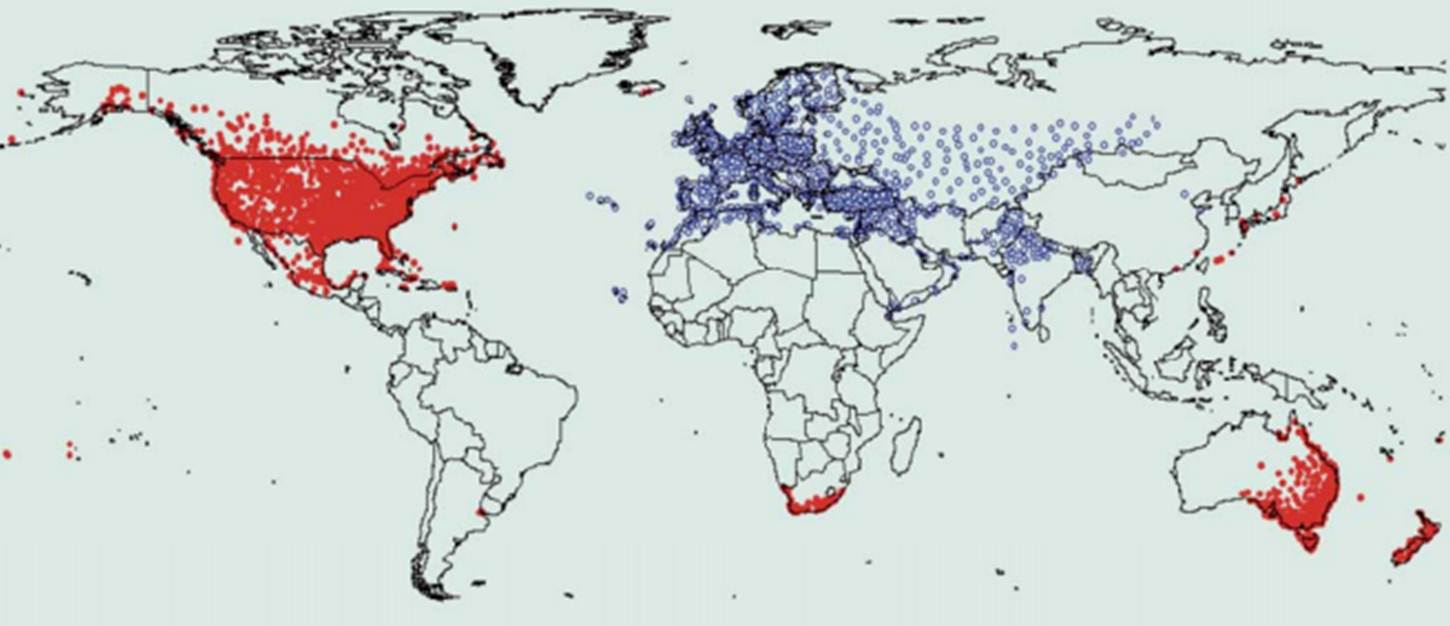Introduction
The common starling (Sturnus vulgaris) is one of the most invasive bird pests worldwide, having established populations in many countries outside its natural range. It occurs naturally in Europe and Asia and introduced populations occur throughout North America, South Africa, Argentina, Polynesia, New Zealand and eastern Australia. Once introduced to a location they can colonise surrounding areas, including offshore islands. In 1863, starlings from England were first released in eastern Australia, where they are now widespread.
The first starling recorded in Western Australia (WA) was in 1936 when a single bird was observed and removed at Gingin. Since 1971, individuals and small flocks of starlings crossing into WA via the Nullarbor Plain have been controlled by the Department of Agriculture and Food, Western Australia (DAFWA).
Small populations of starlings were established in the south-east of WA, near the towns of Munglinup and Condingup between 2006 and 2009. These populations were successfully eradicated after a substantial control response was successful over the same time period. These birds are subject to continual control work that has two aims: to prevent an increase in starling numbers and colonisation of other areas; and to achieve the eventual eradication of starlings from WA. Starlings have also been recorded in other parts of the state, such as the Cadjebut mine in the Kimberley region.

Description
Starlings are small to medium-sized birds with males and females similar in appearance. They have distinctive glossy black feathers with an iridescent green and purple sheen. From a distance they can look plain black. In autumn after moulting, the new feathers have pale tips, which give the birds a spotted appearance. However, by spring these tips have worn and the birds appear glossy black again. The beak is blackish in colour for most of the year, but yellow while the birds are breeding. Young birds (seen spring/summer) are a dull mouse-brown colour and when they moult to adult plumage in autumn they have a patchy brown and black appearance, often with some pale spotting.

Sound
Hear what the starling sounds like, click the 'play' button below - note starts at 4 second mark.
Habitat
Common starlings are strongly associated with human-disturbed habitat such as farmland and cultivated areas. However they can also live in a wide range of rural and urban habitats including open country or grasslands, wooded regions, swamps, parks, towns and cities.
Behaviour
Starlings are aggressive, social birds and can form very large flocks that move, feed and roost together. On the ground, they walk jauntily or run rather than hop like many other birds.
They are often associated with livestock and can be seen perched on the backs of animals or on the ground among grazing stock. Starlings are also proficient songbirds and they can mimic the calls of many other birds.


